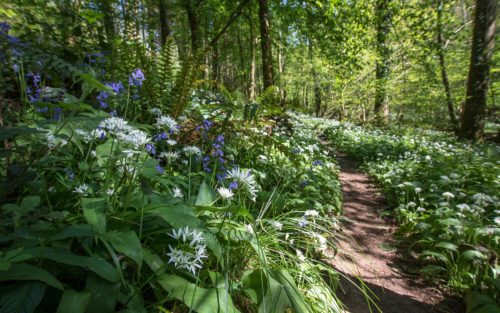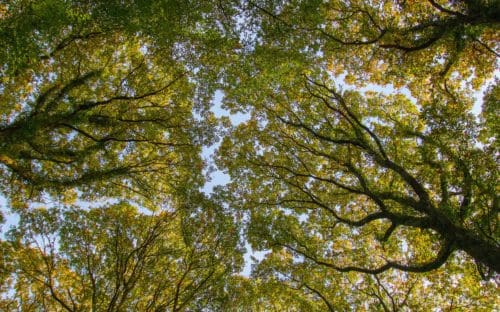The Wye Valley is a vitally important landscape for wildlife with three Special Areas of Conservation (SACs): the River Wye itself; 800 hectares of ancient semi-natural woodland in the heart of the Wye Gorge; and a collection of sites in the Lower Wye Valley used as roosts by Greater and Lesser Horseshoe bats. There are also 45 Sites of Special Scientific Interest (SSSIs), many of them managed as Nature Reserves by local Wildlife Trusts which you can visit.
Ancient woods are some of the richest habitats for wildlife in the UK providing homes for species such as Greater and Lesser Horseshoe bats, woodland birds, dormice, fungi and insects. Only 2% of the UK is now ancient woodland, with an unbroken history of tree cover since medieval times. Here, in the Wye Valley National Landscape, 27% of the land is woodland or forestry and most of it is ancient, making it extremely precious.
The Wye Valley is internationally important for these ancient woods, which forms an almost unbroken chain stretching from Chepstow to Ross-on-Wye. If you walk along the Wye Valley Walk or Offa’s Dyke between Chepstow and Monmouth you will pass through these woods, full of grand old veteran trees and gorgeous woodland flowers.


Bluebells, wood anemones, wild garlic and wood sorrel are all signs of ancient woodland. Healthy ancient woodland also includes areas of fallen, or standing, dead wood, which provides ideal habitats for fungi and insects
Ancient woods often bear the scars of man’s past activity. You can see evidence of the millstone industry in Prisk Wood, which hides a maze of abandoned millstone quarry workings. Old millstones now provide great habitats for mosses and you can discover this hidden history on the Puddingstones and Pubs walk which you can download here.
Here are some of our favourite woods you can visit and where you might spot woodland birds such as the Woodpecker, Blackcap, Nuthatch, Long Tailed Tit, Pied Flycatcher and Waxwing. However, there is one ancient wood which is definitely off limits! Lady Park Wood is a unique experiment in neglect. It has been completely neglected, on purpose, since 1945. It is a long-term study area to see how woodland develops naturally, when there is no human interference. Species that depend on light, open conditions provided through coppicing and thinning are not faring so well here, whilst fungi, insects and mosses are thriving.


This is a broadleaf woodland, rich in wildlife, and important as a feeding area for Greater Horseshoe Bats. Coppice Mawr Wood. Accessible from the car park on the B4235 3km west of Chepstow.
These woods above Monmouth and are crossed by several public and permissive footpaths. They are accessible from The Kymin and the Offa’s Dyke National Trail Path which runs along the south-western margin of the wood.
Cadora Woods run between Redbrook and Bigsweir bridge, alongside the A466 from on the English side of the Wye. A number of public paths cut through the woods and Offa’s Dyke National Trail path runs through and along its edge.
A large area of ancient woodland near Woolhope in the north of the Wye Valley National Landscape. These woods are a Site of Special Scientific Interest, nationally important for butterflies and moths. There are two butterfly trails through the woods. The trails are mainly made up of hard forest tracks, with gentle slopes, which should make easy going for kids and pushchairs.
These woods stretch between Whitchurch and Wyastone Leys and are owned by the Woodland Trust. The Wye Valley Walk leads through the woods, and there are lots of paths and rides so take OS Explorer Map OL14 with you to find your way around. This site is important for its flora and fauna, geology, archaeology and industrial history. A large Bronze Age Hill Fort at the top of the hill offers spectacular views across the Wye Valley, whilst caves provide archaeological interest and roosting sites for Greater and Lesser Horseshoe bats. The Head for the Hillforts walk leaflet crosses the hillfort and passes through some of the Little Doward Woods.